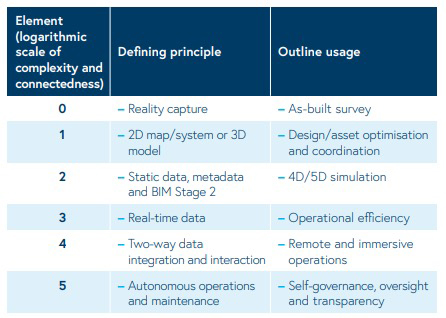Organizations continuously search for innovative ways to optimize their operations and elevate efficiency. One promising frontier is the integration of digital twins for predictive maintenance.
However, the true potential of this technology often remains untapped, with many organizations settling for what can be described as “digital shadows.” In this exploration, we’ll talk about the nuances of digital twins, bridging the chasm between promise and reality and guiding organizations on the intricate path to maturity.
Understanding digital twins beyond the basics
Is your organization using digital twins today? The answer depends on how you define “digital twin.” At the most basic level, it is a virtual representation of a physical part, product, plant or process – which can be a relatively low hurdle to clear for organizations with sophisticated digital capabilities, making it easier to answer “yes.” After all, your organization may have many models that fit this loose definition at any given moment.
In practice, though, what passes for a digital twin in many industrial organizations doesn’t come close to approaching the full power and potential of the idea. This gap between promise and reality is significantly pronounced when viewed through a specific capability or organizational requirement, such as predictive maintenance.
Bridging the gap: The promise of predictive maintenance
Predictive maintenance is about making things run smoothly – from managing vehicle fleets to keeping factories running at total capacity with minimal machine downtime. The goal is simple: identify and fix maintenance issues in real-time before they become more significant problems.
It is even better because it helps maintenance leaders anticipate the resources required for future upkeep. Will a machine fail before its next scheduled maintenance? What can be done today to mitigate that risk? Digital twins come to the rescue, providing leaders with the tools to answer these questions. This not only impacts the current cost and time of maintenance but also shapes plans.
Think of a digital twin as the primary engine of predictive maintenance. It uses constantly updated sensor data to create real-time models of actual machines. By keeping an eye on these models with real-world data, digital twins boost immediate maintenance capabilities and predict future needs. They don’t just fix problems – they figure out why problems might happen in the future by testing different scenarios. This superhero capability makes digital twins essential for planned and unexpected maintenance, leading to significant savings. No wonder leaders are eager to have these capabilities in their toolkits.
Related: Modern manufacturing’s triple play: Digital twins, analytics and the Internet of Things
On the path to maturity: From digital shadows to digital twins
If your current models provide the insight and response needed, they might be better defined as “digital shadows” than twins. Digital shadows use less data, often looking backward to describe what just happened or what is happening right now, but they fall short in pointing the way to future events. While this can be useful in some ways, digital shadows lack the depth required for accurate predictive maintenance.
Running digital shadows isn’t a failure. It’s a crucial step to maturity and an opportunity for organizations to enhance their strengths to develop fully operational digital twins. It helps to start with a clear understanding of what a mature digital twin looks like.

Atkins Realis, an international engineering, procurement and construction firm, offers a transparent maturity model. As shown in the graphic (right), this maturity model suggests that while the most basic digital twins capture and reflect the current reality, those most sophisticated could operate autonomously.
Imagine managing engine maintenance for an aircraft fleet. Using engine performance data, you create models showing various engine failures and causes. Based on historical data, these models reveal that engines in dusty conditions are at frequent risk of failure. You develop a nuanced understanding of time to failure based on exposure duration. These reliable and accurate models are then enriched with live data from engines across the fleet.
Equipping aircraft engines with sensors detecting various conditions, including particle exposure, leads to the transformative moment when a digital shadow becomes a digital twin. Bidirectional data flows between aircraft engines and their digital twins, creating active risk profiles for each engine. A mature digital twin can detect potential risks before they escalate, notifying human operators for strategic intervention within a predictive maintenance strategy. This process enhances efficiency, reduces downtime and maximizes the lifespan of assets.
The importance of the right foundation for data
In predictive maintenance, mature digital twins rely on more than sensor-generated data. It’s often said that there’s virtually no limit to the data that can be measured, managed and analyzed today – but because there are limits to the amount of data that any given organization can manage given cost and technology constraints, it is important to distinguish between peripheral, “nice-to-have” data and data that is essential to the functioning of the digital twin. Every mature digital twin should have these five core data types for predictive maintenance.
- Digital model: Geometry data of a physical object.
- Static parametric data: Characteristics of specific assets or components.
- IoT data: Real-time, high-fidelity sensor data generated by internet-connected machines. This is sometimes referred to as telemetry data.
- Service data: Inspection, repair, and service records for the asset over its lifecycle.
- Simulation data: AI- and physics-based, using real-time readings and synthetic data to produce results under different performance scenarios.
- Physical entity control: Resulting data that supports human-assisted, augmented, or autonomous actions.
Building this foundation might be a phased process, depending on the organization’s strategy and existing capabilities. Several data types may already be readily available for those digital shadow capabilities, providing a starting point for further enhancement.
The future of predictive maintenance
The journey to digital twin maturity is about transforming digital shadows into powerful predictive tools. By embracing the correct data and understanding the full potential of digital twins, organizations can revolutionize their maintenance strategies and achieve significant savings. The promise of predictive maintenance with digital twins opens doors to a new era of operational excellence and efficiency.
How to get from here to there
Having established the distinguishing characteristics of a mature digital twin, the obvious next question is: How do we get from here to there as quickly as possible? In the next article in this series on digital twins, we’ll look at the practical steps required to move up the maturity curve using a real-world example enabled and executed by SAS. Even better: It’s about motorcycles!

